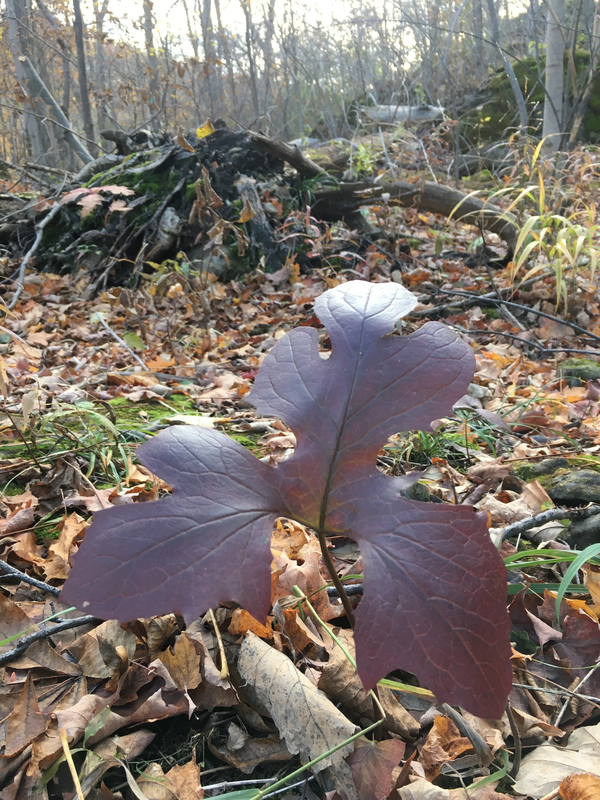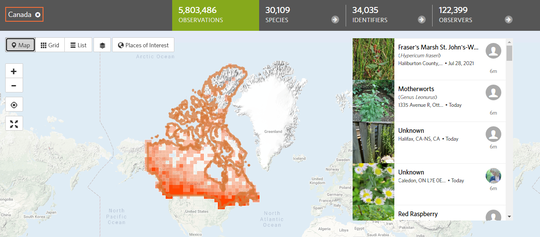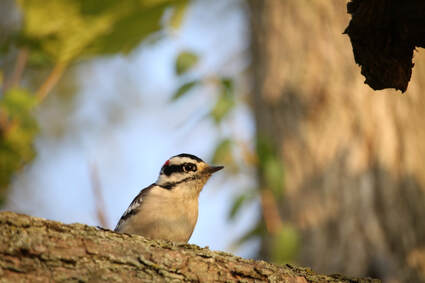|
by Christian Wormwell
iNaturalist is a community science website with over 300,000 active users worldwide. It functions like a social media site for nature lovers, where people share their photos or audio of living organisms from any domain or kingdom of life through submissions called “observations”. Users work together to help each other identify the species depicted. As well, artificial intelligence technology can help determine which organisms may be in the photo. iNaturalist observations have real implications for science and their data is used worldwide. An unofficial list cultivated by users on the site’s forum keeps track of published scientific papers that incorporate iNaturalist data; the list has 42 entries from 2020 alone, in publication topics ranging from changes in morphology in leopard frogs in California, to a leaf beetle being found in Bulgaria for the first time. Many of the papers listed are about range expansions for species, which is an area iNaturalist data excels in. It was an iNaturalist user who reported the first instance of the destructive zigzag elm sawfly in Canada, and the Government of Canada’s official website now has a fact sheet for the pest that includes a link to iNaturalist. iNaturalist is certainly a great place for community scientists. For example, Ontario's Natural History Information Centre (NHIC) runs an iNaturalist project that keeps track of sightings of threatened species across the province, and the Ontario’s Government website contains articles encouraging people to submit sightings of threatened species. Checking my iNaturalist statistics, I can see that I have recorded nearly 40 species tracked by the NHIC that are considered threatened or otherwise vulnerable in Ontario; some were even in my suburban backyard. I would not have known of their identity or conservation status was it not for iNaturalist! All one needs to do to get started is create a free iNaturalist account and start uploading photos or audio. The mobile App allows users to photograph species and submit observations right from the field. No expertise is needed – if all one can determine is ‘this is a bird’, the global community including experts in any domain of life, can help identify the species.
Every time I go for a hike, my phone is in my hand – some might like to distance themselves from technology on their hikes, but iNaturalist has become a fundamental part of my trips due to the fun and knowledge I have gained out of it since that fateful day in the Glen. Contributing to science, whether great or slight, makes using iNaturalist a powerful, rewarding incentive and experience.
4 Comments
7/8/2024 03:13:27 pm
My adjustment for the essay is formed and amazed for the suggestions. The payment of the work for the team. Cluster is implied for the mode for the goodness for the filing of the joy for the entailment for the reforms by all pitons for the planned element for the essay.
Reply
7/10/2024 10:53:12 am
Henley tops offer a casual, sporty look for winter. These tops feature a buttoned neckline, adding a bit of detail to a simple design. Henley tops can be worn alone or layered under vests and jackets.
Reply
7/20/2024 11:09:29 am
Nature lovers will enjoy the green spaces visible along the canals. Parks and gardens add a touch of nature to the urban landscape. The balance of natural and man-made beauty is one of Amsterdam's charms.
Reply
7/23/2024 03:12:52 pm
Evaluating soft skills becomes more precise with AI. Tools that assess communication, teamwork, and problem-solving abilities provide a comprehensive view of candidates.
Reply
Leave a Reply. |
ELB MembersBlogs are written by ELB members who want to share their stories about Ontario's biodiversity. Archives
January 2023
Categories
All
|





 RSS Feed
RSS Feed